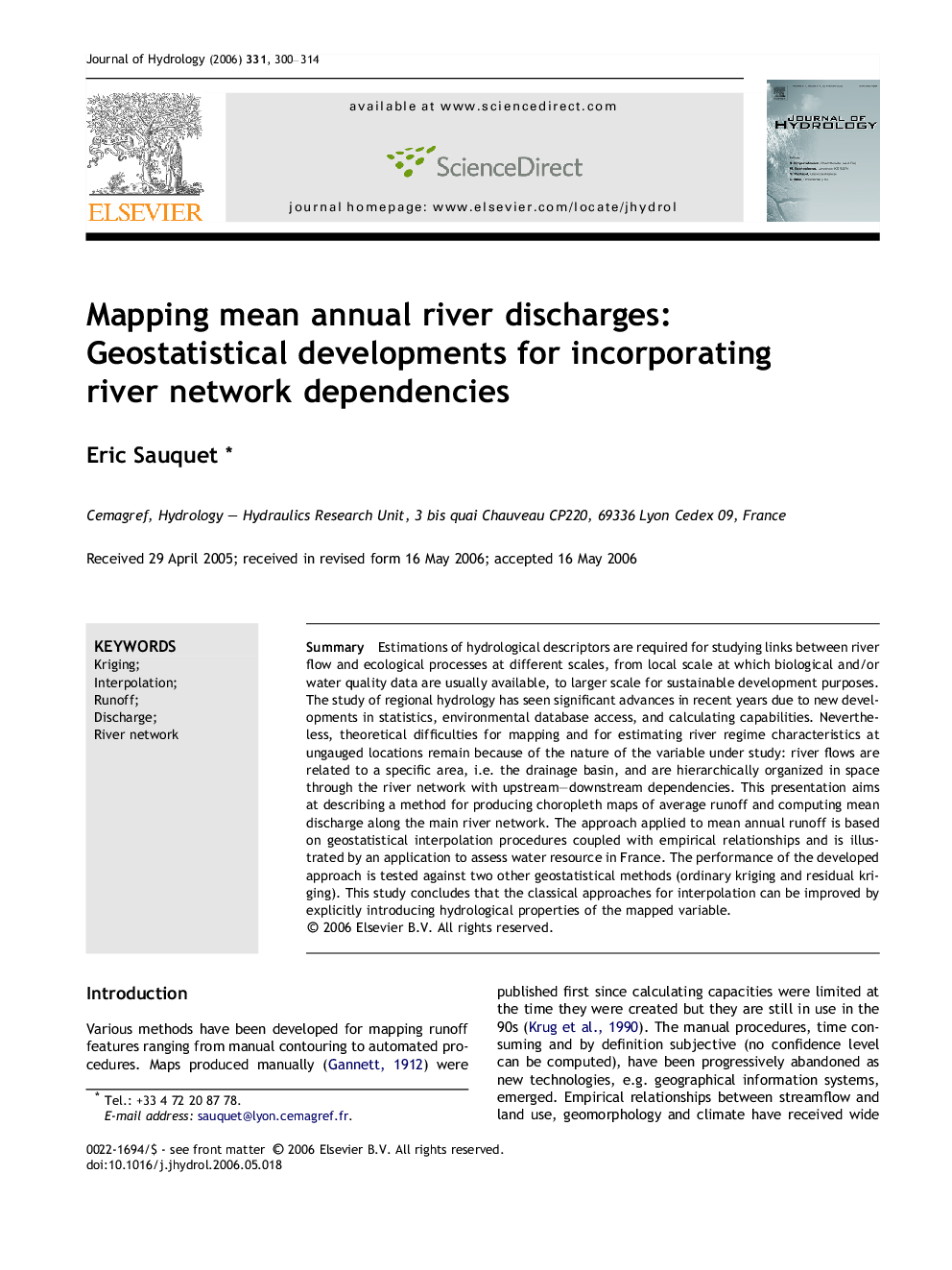| Article ID | Journal | Published Year | Pages | File Type |
|---|---|---|---|---|
| 4580366 | Journal of Hydrology | 2006 | 15 Pages |
SummaryEstimations of hydrological descriptors are required for studying links between river flow and ecological processes at different scales, from local scale at which biological and/or water quality data are usually available, to larger scale for sustainable development purposes. The study of regional hydrology has seen significant advances in recent years due to new developments in statistics, environmental database access, and calculating capabilities. Nevertheless, theoretical difficulties for mapping and for estimating river regime characteristics at ungauged locations remain because of the nature of the variable under study: river flows are related to a specific area, i.e. the drainage basin, and are hierarchically organized in space through the river network with upstream–downstream dependencies. This presentation aims at describing a method for producing choropleth maps of average runoff and computing mean discharge along the main river network. The approach applied to mean annual runoff is based on geostatistical interpolation procedures coupled with empirical relationships and is illustrated by an application to assess water resource in France. The performance of the developed approach is tested against two other geostatistical methods (ordinary kriging and residual kriging). This study concludes that the classical approaches for interpolation can be improved by explicitly introducing hydrological properties of the mapped variable.
